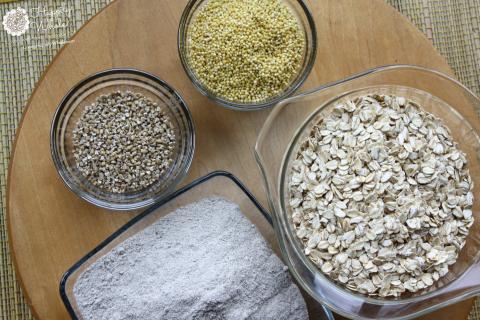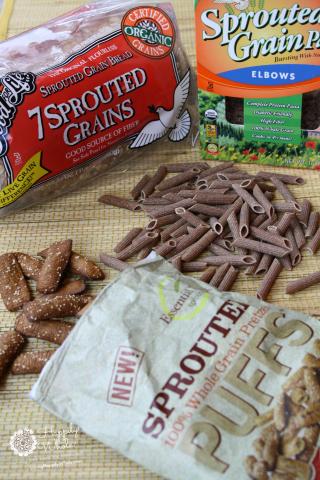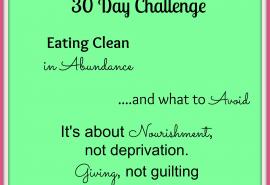
I’m often asked if I eat gluten free. I thought maybe you’re curious, too, since I post recipes both with and without gluten here on Happily Whole.
So, do I eat gluten free?
NO. I do not. But let me explain…. While I often choose gluten free options, it’s not necessarily because I’m committed to or medically need a gluten or grain free eating style (notice: I stay away from the word, ‘diet’).
However, I am extremely particular about the grains I consume.
Let’s talk about WHEAT first since that seems to be the great American grain and also the one best known for containing gluten.
You see, over the years, our wheat crops have become corrupt. Yes, Friends, the industrialization of wheat has corrupted what was once a precious whole grain. The wheat berry is not what it used to be. In fact, most wheat (along with many other) crops are now man-modified, crossbred, contain pesticides, chemicals, preservatives and experience soil/farming conditions which negatively impact their quality. Modern wheat contains proteins that make digestion difficult and our body’s tolerance turbulent. That, alongside our American diets already containing far too many processed foods and too few probiotics for gut health mix to make very unhealthy conditions.
But beyond the ‘corruption’ in the fields, subsequent factory processing practically ruins any redeeming factors of most wheat products by the time they reach our plates. In fact, manufacturing can negate almost all nutritional value as it strips the grain of natural fiber, iron, B vitamins and more. Then, at the end of the production process as the final product takes shape, man-made/synthetic counterparts to what was originally removed are added back (synthetic vitamins, fibers and minerals). Finally, the food industry labels the resulting ingredient ‘enriched wheat’ to entice us to buy.
But, who wants to eat the fake, lab-created stuff when Mother Nature offers far superior nourishment? (Check out this article on 100 Days of Real Food for a great description of whole vs enriched grains.)
Why, you ask, would manufacturers that do that? Seems like a lot more work to synthetically create what the grain grows naturally intact. But, big food producers see it as a way to better preserve their product’s shelf-life and (supposedly) make taste and texture more appealing to the American masses.
Bottom line: beware of the seemingly affirmative term, ‘enriched’ when you read ingredient labels. You’ll find ‘enriched’ on many snack food, bread, pasta or cereal products…even those that say they are ‘whole grain’ on the package often contain enriched grains. This is true of ANY grain, not only wheat.
Okay, so back to what I eat: I DO eat wheat but only organic, 100% whole and most often sprouted, in which case the wheat berry is never processed into nutritionally void flour. The sprouting process de-activates enzyme inhibitors (a GOOD thing for nutrient absorption and digestion) and increases nutrient value just as when a seed is sprouted and becomes a ‘live’ food. I like this simple explanation of sprouted grains on Authority Nutrition.

That’s my abridged lowdown on how I eat wheat. But many more grains contain gluten. Rye, barley, spelt, kamut and other crossbreeds are a few examples.
Gluten is a mixture of two proteins and is important to the elasticity, rise-ability and texture of breads and other grain-containing products.
While not inherently ‘bad’, some people (many people argue that most) have some level of intolerance to digesting gluten, especially after the ‘evolution’ of the grain manufacturing industry and fall of our gut’s health. When consumed it causes immune responses including anything from joint pain to inflammation, bloating, diarrhea, brain fog, fatigue and other behavioral symptoms (especially in children).
With only a slight intolerance or sensitivity to gluten, it can often be consumed in small amounts on occasion without much trouble, especially if the grain is spouted which, again, makes grains far more easily digestible. But people with complete gluten intolerance, those who have been diagnosed with Celiac’s disease, cannot consume gluten in any amount.
Whether or not you believe you have a gluten intolerance, it’s a good idea to consume grains with alternate nutritional profiles. That’s why I so often makeover recipes to contain a variety of grains (like buckwheat, millet or oats) or pseudo-grains (like almond meal, coconut flour, quinoa flour or amaranth)—to incorporate more good stuff into the foods we eat!
I love the idea of expanding the nutritional value of our food with different grains, pseudo-grains and even grain-free options! While my oldest daughter does have a legitimate gluten sensitivity (here’s her story), I simply prefer a nutritionally dense style of eating including LOTS of different whole, real foods. So, regardless of allergy or intolerance, I’d prefer to eat a little of a LOT of healthy things than a LOT of any one thing.
I hope this explains why so many of the recipes on Happily Whole contain gluten free grains or are completely free from gluten. It’s not because I’m committed to a 100% gluten free lifestyle (or any one ‘diet’ approach at all). Instead, I’m committed to a real food, clean eating style.
And, further, it’s because I love the bodies I feed every day, especially the two little ones!
Of course, remove foods you are intolerant to, but otherwise, eat wisely and eat well. You’ll soon realize that eating WELL means staying informed and away from certain grains, like highly processed ones that negatively influence your health.
So there you have it. I eat wheat, gluten and everything real in between. And, in Happily Whole style, I’d recommend you to love your bodies the same!




Comments